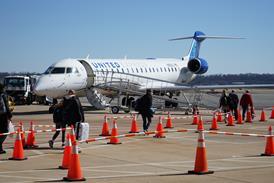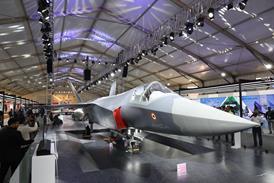Boeing will consider production rate increases for the 737 programme and continue to focus on boosting productivity as it assesses the still-unknown financial impact of delays on the 787 programme.
The company's "record year" last year and bright growth prospects this year provide a short-term lift, but only disguise the 787's potential financial drag on company earnings in 2009.
As first delivery to 787 launch customer All Nippon Airways is delayed until early 2009, the full weight of the programme's nine-month schedule setback will not be felt for at least 12 months.
Pat Shanahan, Boeing vice-president and general manager for 787, is still assessing the aircraft's production system. Although the company tentatively plans to complete first flight by June and begin deliveries early next year, the final certification and production schedule will be announced in late April.
At the same time, the company will also brief stock market analysts on its initial projections for financial guidance in 2009.
But Boeing is already considering moves that could boost overall sales targets in 2009, including a potentially record-setting rate increase for the 737 production line. In 2007, the company produced its next-generation narrowbodies at a rate of 27.5 per month, down only slightly from the line's modern high point of 28 per month in 2001 before the US terrorist attacks.
Boeing confirms that it will consider a new rate increase, but is studying the readiness of its supply chain and the impact on long-range demand. But the company itself owns enough capacity at the assembly centre in Renton, Washington, to boost production beyond 31 per month, if necessary.
"It's a matter of whether our customers need it," says Boeing chief executive Jim McNerney. The company still needs to confirm that the "business case is sound and the supply chain is ready [but] we will be studying it hard in 2008".
Boeing's 737 supply chain last year was functioning at twice the production rate of the low point of the last global economic downturn in 2003. But orders for single-aisle twinjets continue to pour in despite some calls by airline executives for airframe manufacturers to deliver a replacement after 2012, or three years before Boeing will be ready.
As Boeing continues to assess its options for 2009, the company also faces the pressure of a major programme start decision. For now Boeing is content to wait until at least 2015 before delivering a new narrowbody, and the company is closely watching Airbus's evolving design of the A350-1000. The aircraft's performance remains only loosely defined, but appears to be aimed at the replacement market for the 777-200ER.
"We have time to assess that plane and time to assess what we might need to do if anything with the long-range 777," McNerney says. "We don't have to do anything in 2008. I wouldn't see a major programme emerging until after this year."
So far, the attributed costs of the 787 delay appear relatively contained.
In 2007, delays prevented research and development costs from declining at the projected rate. This year, Boeing shed about $500 million from its annual revenue target and dropped its minimum delivery projection by only five airframes, attributing both declines to 787 issues.
Moreover, Boeing's overall research and development cost projections remained level at $3.2-3.4 billion, but did not increase despite the 787 delays. Some market analysts questioned Boeing's R&D cost estimate, and one even challenged McNerney to personally vouch for its accuracy.
"Are there some risks inherent in R&D the answer is yes, but I'm comfortable with that guidance," McNerney said during a conference call with analysts and media on 30 January.
But the 787's impact on sales and delivery forecasts was expected to be minimal anyway. Only a handful of 787 deliveries were planned for late 2008 before the schedule revisions, and Boeing has easily accounted for them amid rising revenues and profit forecasts in both its commercial and defence businesses.
Boeing originally promised to deliver more than 100 787s in 2009. The company now expects to deliver a similar amount within the next 18 months, indicating that the original production ramp has slowed so far by at least one-third. Boeing faces not only the impact of lost revenue in 2009 from delayed deliveries, but also financial penalties from airline customers.
Source: Flight International























